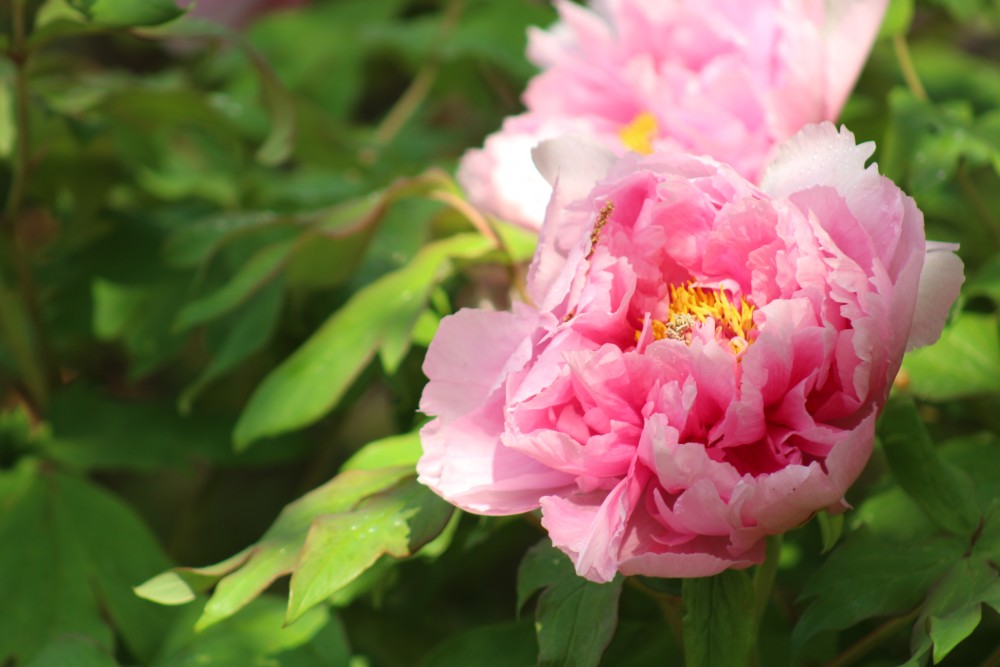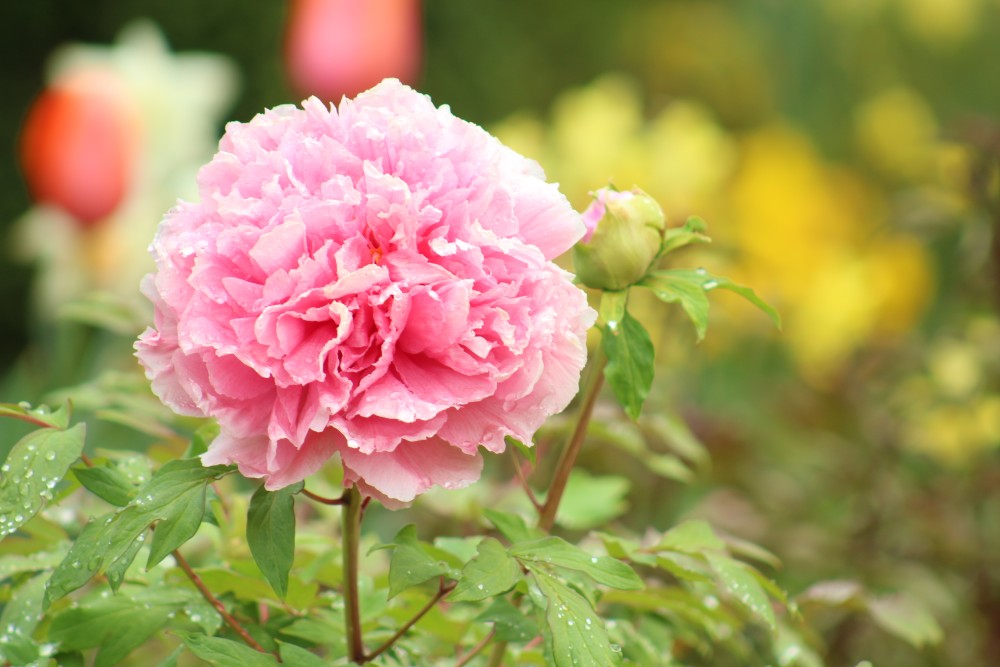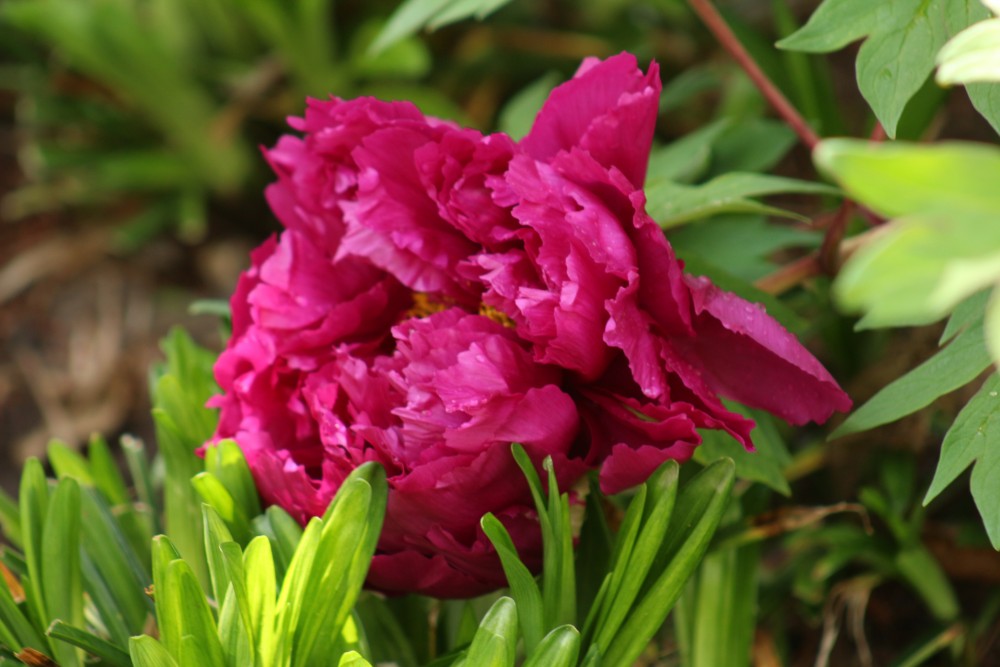Peony: Precious and Prime
April is the Perfect Time for Peony Watching
*PLEASE NOTE: This is an archived blog post we are sharing with you while the Garden is closed due to the COVID-19 pandemic (April 2020).
Peonies provide the kind of staggering beauty that always melts my heart and takes my breath away. For me, spring would only and truly come when the first peonies blazingly open, with their sweet, mysterious curls stroked by the sun’s buttery fingers. As a child, every time our peonies bloomed, I would run out to the garden, bare-foot and ruffled-hair, just to suck in a lungful of their sweet fragrance and adore their trembling, ephemeral charm. White and pink, coral and crimson, scarlet and purple, precious peonies always bring me an out-of-this-world, indescribable joy that no other flowers can compare.

This tree Peony, Paeonia suffruticosa ‘Iwata Kagami’, blooms beautifully and promises to catch you off guard as you walk around the Asian Valley.
Since time immemorial, peonies have been cherished by people of all cultures. The name ‘peony’ actually derives from the Greek name ‘Paeon’, meaning “the healing.” Paeon was a physician to the gods, who discovered the plant’s medicinal properties. In fact, for centuries, peonies have been cultivated for both medicinal and horticultural uses. They have a distinct history in the gardens of China, Japan, Europe, and North America. Honestly, it always amazes me to think that peonies, despite their short-lived fleeting blooms, hold a history as long as our own — longer in fact. They never fail to inspire me, you, or our ancestors hundreds of years ago, as if every petal has as story to tell of times gone by.
Generally speaking, peonies fall into four groups based on their use: herbaceous peonies (Paeonia officinalis and Paeonia lactiflora), tree peonies (Paeonia suffruticosa), intersectional peonies (Paeonia Itoh), and Woodland peonies (Paeonia japonica). Herbaceous peonies are more common in Europe and Northern America, while tree peonies are more widely grown across Asia. Their hybrids, Itoh peonies, have the best of both worlds. They possess the range of colors available for herbaceous peonies and the flares (contrasting color markings at the petal base) characteristic of tree peonies. Woodland peonies aren’t as popular, but are just as pretty. They have the added value of loving shade.
Lewis Ginter Botanical Garden is home to 89 peony cultivars, 12 of which are tree peonies. These dazzling darlings are in the Asian Valley, Flagler Garden, and Grace Arents Garden. Later in April the more unusual yellow peonies will be blooming in the upper Asian Valley.

Adorned with grace, this herbaceous peony, Paeonia lactiflora ‘Raspberry Ice’, looks refreshed in the Grace Arents Garden after a misty morning.

This tree peony, Paeonia suffruticosa ‘Shima Dajiin’, in the Asian Valley will soon be at her prime with beautiful fuchsia blossoms.
For all peony enthusiasts out there, these coming weeks will be prime peony time.